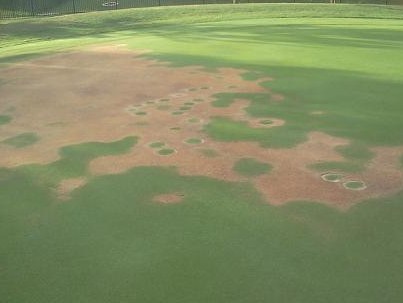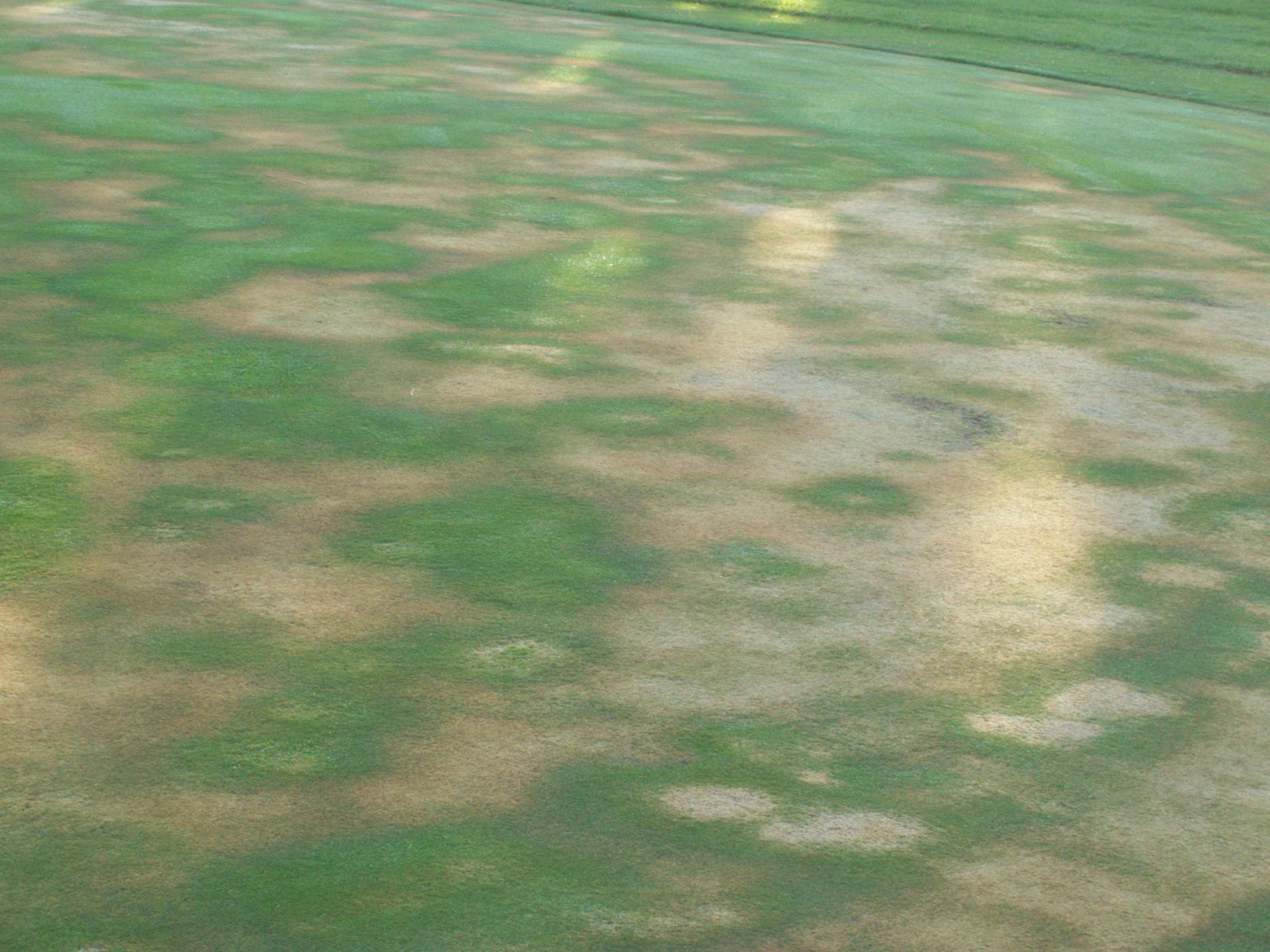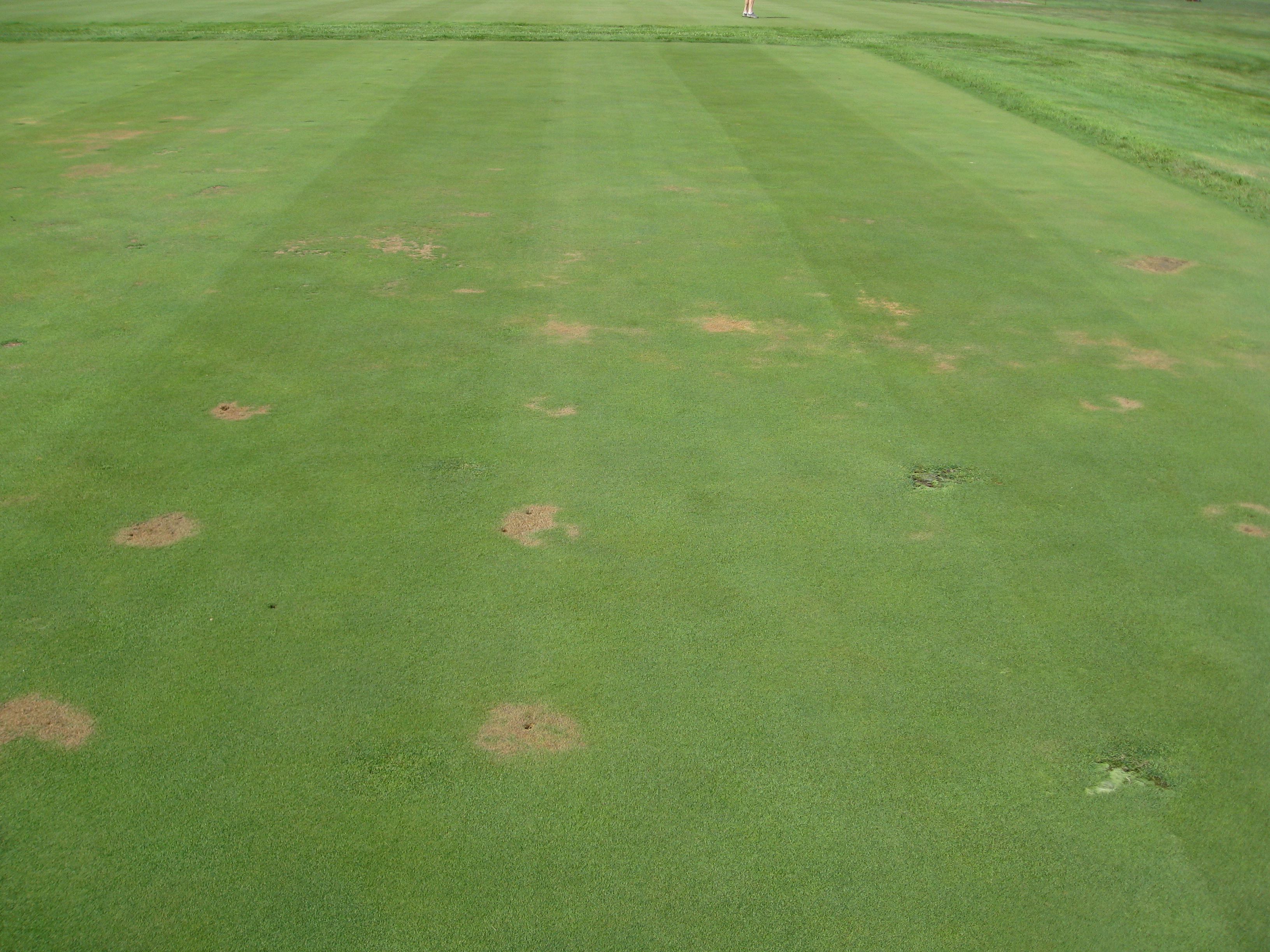Summer is really here now, with fireflies, trips to the swimming pool, and … hot south winds to suck the moisture out of the ground. In sand-based putting greens, localized dry spot can pop up FAST, causing major damage in a short period of time.
Here is what localized dry spot can look like:
Keep an eye on your soil profile so you can stop this damage before it starts. When you get damage to the extent shown in those two photos above it is a long road to recovery.
To check for localized dry spot, pull up some cores and use the “droplet test” by putting drops of water on the plug. If the drops just sit there, not wicking in, you have a problem. The soil is water-repellent.
Sometimes there is a defined hydrophobic layer with normal soil above and/or below, so check at different depths, all the way down the rootzone:
You might also notice water beading up on the surface and not wicking in.
You don’t want this to sneak up on you. Keep an eye on your soil profile, especially locations with a history of problems. Aerification and use of wetting agents can help get moisture where it needs to go.
This example below shows how a slight change in the rootzone can cause problems. The round spots are all locations where the soil was altered for research, with little mini-plots inside tubes sunk into the ground. These spots are prone to LDS. We all know that putting greens are pretty sensitive, so be careful if you are changing up your sand topdressing or other soil-related factors.






